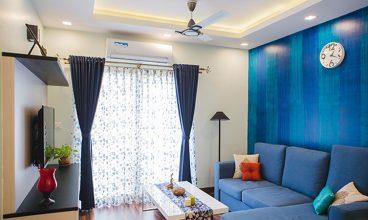Smart control design is a rapidly evolving field that integrates technology and human needs to create efficient and intelligent systems. However, like any innovative area, it comes with its set of challenges. In this comprehensive guide, we delve into the challenges of smart control design, exploring the complexities and solutions that drive this dynamic sector forward.

Complexity in Integration
One of the primary challenges in smart control design is the complexity of integrating various technologies seamlessly. Smart systems often involve a combination of sensors, actuators, communication protocols, and algorithms working in harmony. Each component may come from different manufacturers or operate on diverse platforms, making integration a daunting task. Engineers face the challenge of ensuring compatibility, reliability, and scalability while designing these systems.
Interoperability Across Platforms
Interoperability is crucial for smart control systems to function efficiently. However, achieving seamless communication and data exchange between different platforms and devices remains a significant challenge. Standards such as MQTT, OPC UA, and RESTful APIs play a vital role in enabling interoperability, but ensuring their effective implementation across diverse systems requires meticulous planning and expertise.
Data Security and Privacy
With the proliferation of interconnected devices in smart control systems, data security and privacy have become critical concerns. Protecting sensitive information from cyber threats, unauthorized access, and data breaches requires robust encryption, authentication mechanisms, and secure communication protocols. Designing smart control systems with built-in security features and regular updates is essential to mitigate these risks.
Energy Efficiency and Sustainability
Smart control systems are expected to enhance energy efficiency and promote sustainability. However, achieving optimal energy management while maintaining system performance poses a challenge. Designers must balance energy-saving strategies with user comfort and operational requirements. Incorporating renewable energy sources, predictive analytics, and adaptive control algorithms can address these challenges and contribute to sustainable smart solutions.
User Experience and Interface Design
The user experience plays a crucial role in the adoption and success of smart control systems. Designing intuitive interfaces that provide meaningful insights, actionable data, and seamless control functionalities is a significant challenge. Human-centered design principles, usability testing, and feedback mechanisms are essential for creating user-friendly interfaces that enhance user engagement and satisfaction.

Scalability and Flexibility
Smart control systems are often deployed in dynamic environments where scalability and flexibility are paramount. Designing systems that can adapt to changing requirements, accommodate future expansions, and integrate new technologies without major disruptions is a challenge. Scalable architectures, modular designs, and agile development practices are key strategies to address scalability and flexibility challenges in smart control design.
Cost and Return on Investment
Balancing the costs associated with smart control design and the expected return on investment (ROI) is a significant challenge for organizations. The initial investment in hardware, software, infrastructure, and implementation can be substantial. Demonstrating tangible benefits such as energy savings, operational efficiency improvements, and enhanced user experience is essential to justify the investment and achieve a positive ROI.
Regulatory Compliance and Standards
Smart control systems must adhere to regulatory requirements and industry standards to ensure safety, reliability, and interoperability. Keeping up with evolving regulations, certifications, and compliance frameworks poses a challenge for designers and manufacturers. Collaboration with regulatory bodies, industry associations, and continuous monitoring of standards are essential to meet compliance requirements effectively.
Overcoming Challenges Through Innovation
Despite the challenges, smart control design continues to advance through innovation, collaboration, and strategic planning. Interdisciplinary approaches, continuous learning, and agile methodologies enable designers to overcome complexities and deliver impactful solutions. By addressing integration, interoperability, security, sustainability, user experience, scalability, cost-effectiveness, and regulatory compliance, smart control design can fulfill its promise of creating intelligent and efficient systems for a connected world.




Comments